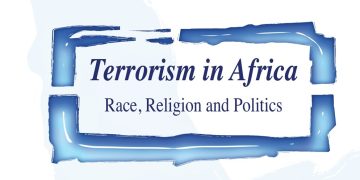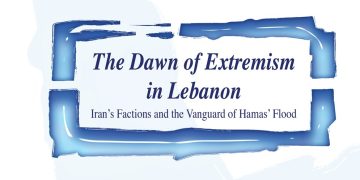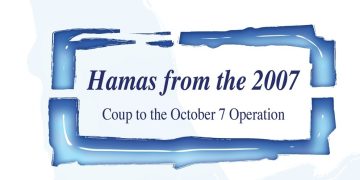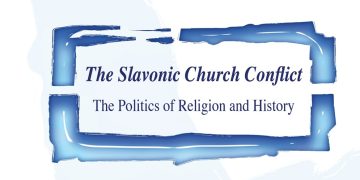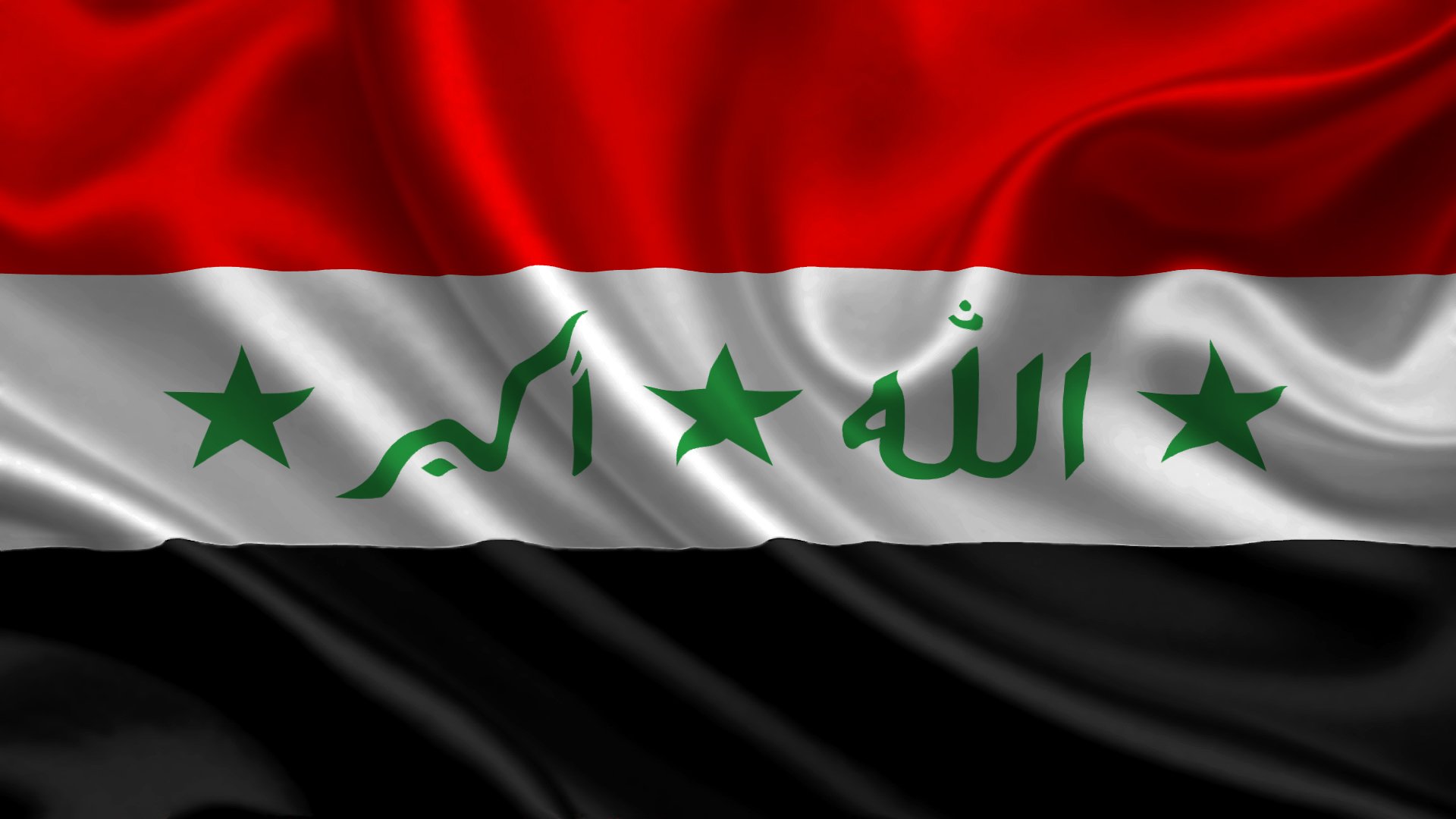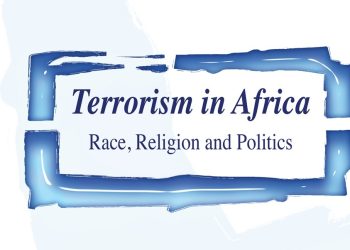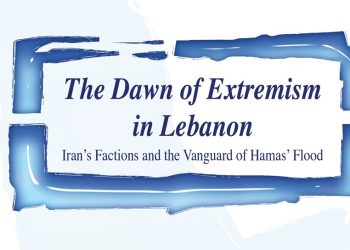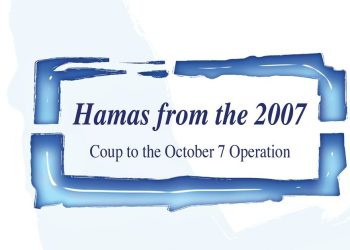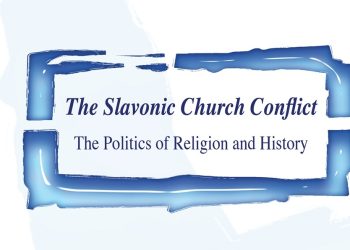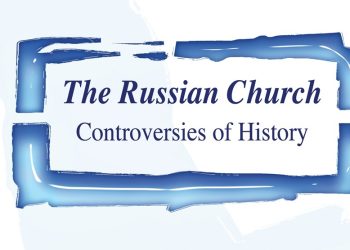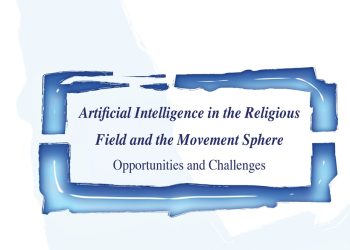Executive Summary
DDR programs typically attempt to address the post-war surplus of combatants in three ways: by collecting, managing and destroying arms; discharging combatants and managing their transition to civilian life; and supporting ex-combatants to reintegrate economically, politically, and socially.
In the case of Iraqs‘PMF, engaging ex combatants in DDR process within SSR approaches never happened. The long-term status of the PMF became too politically controversial for top leadership to move towards DDR in any meaningful way. Instead, Iraq’s political elites nominally embraced security sector reform (SSR) at a policy and strategic level with little concrete steps towards a viable DDR approach when it comes to PMF. For years, the PMF has rejected and sabotaged national-level efforts at disarmament, demobilization, and reintegration (DDR) of its fighters, despite calls from Ayatollah Sistani. Reluctantly, it only acceded to minor steps, such as relabelling its offices and moving its arms depots out of cities, though mostly refusing to remove its fighters and bases from urban areas.
This paper will be studying the case of Iraq’s PMF role and position within a sustainable viable SSR-DDR program. The analysis will try to look at the reasons behind the lack of interest in DDR from the upper echelons of PMF leadership and ways to keep the Iraqi civil society organizations and international NGOs interested and engaged in SSR and DDR altogether. It will include recommendations and ways of addressing and Re-configuring security sector reform approaches at a local level by aiming at addressing the bottom up approach ie a local level SSR strategy within a national level one.
International assistance on the implementation of SSR programs in Iraq play a major role in emphasizing on the importance of DDR initiatives, hence this paper will be addressing the role of the international community and the areas where they could alleviate the importance of DDR through ways of mediating with the PMF and other local actors. How does the international community manoeuver showstoppers as paramilitary groups within SSR programs? This paper will try to answer the question from the PMF angle.
-
Introduction and overview
Background
In 2014 ISIL launched its campaign and seized Mosul, which left many communities undefended given the overwhelming situation facing the Iraq’s national security forces. Given the gaps created and the security void at a communal level, Grand-Ayatollah Al-Sistani, issued a fatwa on 13 June 2014 calling upon all able-bodied Iraqi men to take up arms. As a response to the fatwa, tens of thousands of men mobilized. However, instead of joining the Iraqi Security Forces (ISF), the majority turned to non-state armed groups, many of which were associated with Iraqi political parties or pre-existing politico-religious constituencies. By Executive Order, Prime Minister Nouri Maliki at the time, decided to combine all these groups and gather them under one umbrella the Hashd al-Shaabi, or Popular Mobilization Forces (PMF).
In 2014, 506 different groups formed the PMF, which grew to 707 subgroups in 2017[2] with a majority of Shiaa combatants however; it also included numerous minority forces and some Sunni combatants. With time, PMF expanded from an assortment of armed groups into a formal consortium “the Shiite coordination group” especially with the Iraq’s parliament approving a law granting legal status to the PMF in 2016. That being the PMF is not formal integrated organization but is instead it is a series of fluid and adaptive networks connected to power structures within Iraq.


In 2020, PMF’s networks had an annual budget of $2.6 billion[3]. The networks were then divided into more formal entities such as brigades – each including 3,000 fighters. Some of these fighters are already part of the public system. PMF networks are also heavily involved with the Iraq Security Forces[4]. Being double hatted, some PMF members work as well in a governmental security institution such as MOI, MOD etc.
Several PMF-affiliated members also have senior civil service positions – special grades in the National Security Council (NSC). For instance, Abu Dergham al-Maturi led PMF Brigade 5 while also serving as deputy commander of the federal police inside the Ministry of Interior[5].
March 2018, Prime Minister Haydar al-Abadi issued a decree that merged the PMF into the country’s security forces. That decree granted PMF combatants salaries and benefits, similar to soldiers from the Ministry of Defense. According to the Decree, combatants between the ages of 18 and 25 must graduate from either the Command College or the Defense Ministry’s Staff College in order to hold the rank of lieutenant or above. Roughly, 20 percent of PMF commanders do not meet this standard and thus would in theory be forced to retire. The Hashd Commission has historically maintained a centralized pool of antitank weapons, artillery, missiles, and tanks. In almost all cases, these contingents started as nationalized Badr units given that the Badr was once a well-developed division of the Islamic Revolutionary Guard Corps ( IRGC) during and after the Iran–Iraq War; however, such decision has not been specified anywhere in the March 2018 prime ministerial executive order[6].
Following the territorial defeat of the Islamic State (ISIS), PMF became a significant political security and economical actor in Iraq. Unlike many militias around the world, the PMF managed to gain a formal status within the Iraqi security sector nexus as a state-sanctioned auxiliary force with an annual budget of over $2 billion.[7] Having political backup and sponsorships the PMF was protected from any accountability or even pressure to reduce their power. Hence, they perceive the Iraqi state as a critical structure for their continuity.
Such a reality as well as the political discourse around the size and influence PMF has on several sectors, rushed local and international actors to advocate for a large-scale demobilization, reduction or integration into Iraqi security forces.
However, the overall trend has been toward maintaining and even increasing the size of the PMF in order to strengthen of the patronage networks of political parties instead of decreasing. Since 2014, the leaders of the PMF have pursued an increasingly ambitious agenda. By the end of 2018, PMF held de facto territorial control or substantial influence starting from the south, in places like Basra; to substantial portions of the Disputed Territories and adjacent areas in Diyala, Salah ad-Din, and Kirkuk; as well as important border areas and economic routes in Ninewa and Anbar.[8]
PMF as an institution has become further entrenched, more powerful, and better resourced, with equivalent benefits to regular Iraqi forces, but its own separate command and cabinet seat,[9] and three times the funding of the CTS in the 2019 budget[10]. The PMF’s expansion in numbers and influence continued especially after the assassination of The PMF official deputy Abou Mehdi el Muhandis who died alongside Iran Revolutionary Guard Corps (IRGC) Commander Qasem Solaimani and several PMF fighters on January 3rd 2020.
-
Iraq’s PMF lack of interest in a sustainable viable SSR-DDR approach
In 2018, it was still conceivable for the international community and the PMF that the Hashd leadership might introduce a wide-reaching Disarmament, Demobilization and Reintegration (DDR) approach. The understanding of DDR programs mainly address the post war remaining combatants by collecting, managing and destroying arms; discharging combatants and managing their transition to civilian life; and supporting ex-combatants to reintegrate economically, politically, and socially.[11]
The precise number of PMF fighters is unknown; at its peak, the organization claimed to command 160,000. In early 2018, there were an estimated 152,000 combatants registered with the PMF, of which roughly 120,000 were receiving salaries from the central government[12]. An additional 32,000 combatants received salaries from other sources[13].
Combatants included fighters from pre-existing, mostly pro-Iran, militias like the Badr Brigade, Kataib Hezbollah, and Asaib Ahl al-Haq; so-called shrine militias, i.e., Shia volunteers who responded to Grand Ayatollah Ali al-Sistani’s fatwa to defend Iraq from the Islamic State; as well as various Sunni, Yazidi, Christian, and other minority groups who joined for self-defence.
Politically led pushbacks
With the expansion of the PMF over the past 5 years, PMF is not likely convinced or working towards the demobilization of PMF fighters. Noting that the ideological pluralism is also reflected through different units given the variety of allegiances, hence it is more complicated to incorporate some units than others. For example, protection units such as Abbas Division and Ali al-Akbar Brigade were formed through Sistani’s Fatwa calling for the protection of the shrines from the threat of IS. Sistani, who supports the Iraqi state and the current Abadi-led government, controls them. Other groups following a stronger Shiite or Khomeini’s sub nationalism have a more ambiguous ideological fit and a stronger allegiance to the Velayat el Faqih ideology[14]. Those need to be addressed in a different way, probably first loosening their allegiances in order to be able to be incorporated within the army and or the society[15].
During the October 2021 parliamentarian elections and after a success term, Muqtada al Sadr called to dismantle the PMF. A decision rejected by the PMF despite all calls and requests from Sistani. Nevertheless, few changes were observed especially when it comes to relabelling the PMF offices and moving arms and weapons out of the cities storages but not from the urban areas[16]. The rejection was a direct abortion to all national level attempts to work on disarmament, demobilization, and reintegration (DDR). If the high number of ex combatants did not put pressure and incentivized Iraq’s security agencies to engage in serious DDR approaches then what will? Internal frictions and variety of opinions within the PMF is resulting into a political competition using the sub nationalism to attempt to manoeuvre themselves into power. As has been argued, this will weaken the state, increase sectarianism and endanger the already fragile unity that exists in Iraq.
“The PMF’s street muscle remains large”[17]. Their willingness to conduct violent attacks against their rivals and overtake economically important sector is increasing. For example, according to a source from the Ninawa civil society activities who prefers to remain anonymous, PMF militias in Mosul and other parts of Nineveh actually are acting with greater heavy-handedness in their systematic pressure and political repression. They are even requesting for jizzya or dhimmi[18] from the locals to guarantee their safety and protection, and allow them to stay in their area and run their businesses[19].
As a result, Iraq’s political fragmentations with some major parties retaining deep connections with the PMF will not unify to marginalize the PMF. Instead, they embedded the organization more deeply into the political sphere. On the other hand, Iraq’s political elites nominally embraced security sector reform (SSR) initiatives to reassure the International Community and local actors defying the PMF expansion.
However, these SSR strategies are acknowledging and including the PMF as key actors, which reinforces their presence within the system as a security entity and diffuse the focus from any DDR plan in the near future.
Economic Drivers showstoppers or an opportunity to DDR?
At an individual level:
While PMF leaders asserted that combatants originally mobilized in order to defend Iraq from ISIL without any economic incentive, lower-level PMF combatants had economic need, which was key for their mobilisation[20]. Most of the low-level combatants came from poor families who did not own property. They were unemployed or working as daily labourers before joining the PMF. Those combatants took up arms for a mix of religious, patriotic and economic reasons.
Livelihood: Until Prime Minister Abadi’s November 2018 declaration equalized PMF salaries with those of the ISF, the salary for a PMF combatant was around $350 a month compared to the ISF average rate of $700. Additionally, during deployments, many PMF commanders divided the salaries equally across their units to be able to include volunteers. As a result, every PMF combatant was receiving only $250 per month while they were fighting. [21]
Clearly, the most critical factor for demobilization and reintegration was employment. Without jobs, combatants have “nothing to come back to,” and cannot afford to get married or buy property, which impedes their ability to transition to civilian life. According to J. Perry’s interviews [22] with former PMF combatants, they stressed on the importance of the ability to work and support the family, which was more important than the perceived ‘social status’ of a job. “There’s no unsuitable work; ex-combatants will do anything, they just need a salary,” In fact, during the war it was common for combatants to work as daily labourers while off-duty since the PMF salary was not enough to sustain a family.
Veterans with Disability: According to sources who wish to remain anonymous from the Iraqi Ministry of Defense, disabled veterans are often not registered with the PMF and therefore have no right to compensation, medical care or a pension
Youth: When it comes to reintegration, PMF leaders and combatants worried most about unskilled youth, since they are poorly equipped for government or private sector jobs and may “feel like they have nothing to offer.”[23] Unskilled youth, by contrast, remain overwhelmingly with the PMF. The concern for these combatants is that with no job experience outside the PMF, they are “more likely to keep their combatant’s mindset and it may be difficult to change.”[24]
This socio-economic context must be a central pillar of any effective DDR program. Unless employment can be provided outside the PMF, demobilization is likely to be tumultuous and ineffective.
At an organizational level:
As mentioned earlier, the PMF and Saraya al-Salam dominate Iraq’s illegal economies, including oil and drugs smuggling, and the construction, service, and scrap metal industries[25]. With Iraq sharing more than 24 borders with surrounding countries that PMF controls or have alliances with, corruption has increased. According to Brookings paper on Iraq’s vulnerabilities[26] corruption at these border points has produced more than $10 billion in revenue for militia groups and their partners[27]. From scrap metal to road construction, PMF helped clear areas or take control of recaptured areas. Looting infrastructure and seizing local assets, they took over industries, set their checkpoints on key border posts, “got a cut of lucrative illegal smuggling, and could demand kickbacks as a condition of passage. By one estimate, Assaib Ahl el Hakk AAH earns $300,000 per day through checkpoints in the border district of Jalawla alone”[28].
Any DDR approach has to address the political economy component of the PMF. In simple words, why would the PMF agree on a complete DDR approach while they are able to generate money and access key sectors?
Political and economic dynamics are complex webs of inter-personal and inter-organizational relations of which militia groups are only one component. From a DDR angle, addressing the political economy of conflict requires the buy-in of a multitude of actors from political elites to tribes. The question is, are Iraqis politically and geo-strategically ready to address this subject?
Iraqi government actors and constituencies also have to balance against the reality that Iran and pro-Iranian groups have substantial influence in Iraq. It is important to understand the dynamics that drive the actions of Iran’s partners and proxies. Iran has close relationships of support it can count on in Iraq, with the leading Shiaa PMF forces it can also count on a wider range of relationships of influence, including its relations with other Shiaa political actors that are less closely or publicly aligned, with the Kurdish PUK and the KDP, and with a range of other Sunni and minority leaders and politicians.
Between territorial gains, informal economic and political PMF forces and their leaders currently have power that is more significant and influence in Iraq. At a proxy level, this is undoubtedly beneficial for Iran’s agenda to advance its interests in Iraq through the PMF groups themselves. Such a formula has a win win sum. In fact. PMF territorial advances and border postings is a direct support to advances Iranian interests in securing Iraqi borders, in capturing cross-border trade and economic opportunities, and in enabling a land-bridge from Iran to Syria and other parts of the Middle East; a strategic element to support Iran’s allies in Syria and Lebanon.
US sanctions spill over:
Iran’s proxies also exert considerable economic influence in Iraq to control the Iraqi state and ease U.S. sanctions imposed upon Iran. In fact, Iraq was one of the first countries to be affected by U.S. sanctions including the halt to Iran’s oil and energy exports–as Iraq imports gas and electricity from Iran in large quantities to meet its needs[29]. In 2017, 80 percent of Iraq’s technical and engineering services came from Iranian companies.[30] As a result, Iran adopted a new economic approach in Iraq based on the expansion of economic relationships between the two countries Iranian proxies also founded several banks and real estate companies to transfer funds and purchase properties from displaced persons at the cheapest prices, using threats and forced relocation. Iran’s financial and political hold on efforts to integrate Iranian-backed militias into the Iraqi military hence it is unlikely that Iraq will be able to rein in many of the militias due to the conflicting loyalties of its leadership.
Proxy dynamics poses challenges to DDR initiatives as the decision making is not solely linked to the Iraqi government and the PMF. The fact that PMF operate as both a proxy and independent player makes it hard to establish accountability for violence or even discuss the future of the organization within a nation state framework. In fact, supposedly, PMF leadership is willing to work on DDR initiatives; will Iran provide the greenlight and jeopardize one of the few financial source and cross-country bridges within the Levant?
-
Re-configuring security sector reform approaches at a local level
Ultimately, any process designed to deal with the challenges of Iraq’s militias and corresponding sub-nationalism parties and actors has to combine Security Sector Reform (SSR) with the DDR of large numbers of surplus security personnel. Given the current complexity in designing an Iraq nationwide DDR strategic approach, significant progress must first be made in the areas of security, national reconciliation and unity. While DDR focuses on the former combatant’s transition to civilian life, SSR deals with the structure and relations between the various components of the sector at large by establishing efficient and effective security structures. The main purpose of both is to consolidate the state’s monopoly of force. The dynamic between DDR and SSR means, “both interact in a way that either complements or compromises each other’s chance of success”[31]. When DDR fails to successfully reintegrate ex-combatants back into civilian life, they may take up arms again, form criminal gangs or otherwise pose security threats that could compromise the SSR process. Alternatively, failures in the process of SSR can lead to erosion of trust between local communities and the security apparatus, in turn enabling the formation and rise of subnational armed groups or militias. Hence, the support to an effective and transparent Iraqi security sector can ease the security dilemma confronting former combatants as they face the decision to voluntarily partake in a DDR programme.
Most commonly, integration and DDR of sub-state armed forces starts with negotiations and formal agreements stressing on the political will of all actors involved to honour the agreement. One of the main obstacles in reaching a settlement is usually linked to security challenges that arises from forces having to disarm and demobilise in the absence of security guarantees. Without a secure environment in Iraq, it will be virtually impossible to convince sub- state armed forces to lay down their weapons.
However, despite PMF’s territorial expansion and proxy supports, it has also been facing since 2018 fundamental lack of internal and external accountability led its Iran-aligned factions to violently attack civilian activists. The organization suffered a leadership crisis as well with the assassination of Abu Mahdi al-Muhandis, and its Iranian patron, Islamic Revolutionary Guards Corps General Qassem Soleimani. An incident that intensified the internal fissures within the organization. Not to mention that the PMF ties and allegiance to Iran has portrayed the organization as an entity lacking patriotism and commitment to Iraq which will hamper any attempts for the PMF to become a self-sustaining political actor in Iraq. Such a social and communal vulnerability could be an entry point from which dialogue and communication can start taking place. Leadership trust from within and lack of patriotism perception are causes for skirmishes within the Shiaa coordination framework as well as with other actors who oppose the PMF allegiances. That being said, building trust between communities and security sector actors through localised security solutions, community engagement and reconciliation initiatives is necessary. The recent history of Iraq in dealing with escalating ethno- sectarian tensions suggests that, the national army and police forces should be sufficiently diverse and inclusive in order to enable the provision of security and rule of law by localised units drawn from local communities.
As trust between communities and security forces is built, and security improves, the government could then move to give the ISF a more national character by gradually re-deploying and/or blending localised units. However, in the current situation, there is a discrepancy between the presence and capabilities on the ground of national security sector actors and PMF. The latter has showed that individual PMF units are assuming and competing over the role of local security provider in many places precisely in the South and some areas in Northern Iraq such as Mosul, partially Kirkuk and others. The problem with this situation is that rather than operating for Iraqi unity, some of the individual forces’ aim to promote their own sub nationalism in order to gain and maintain power.
Both SSR and DDR are inherently political processes, which can only be seriously advanced through negotiations. The current reality on the ground does not bode well for DDR, and a rushed, overly aggressive pursuit of this objective is likely to bear a close resemblance to past failures in dealing with Iraq’s militias. Therefore, the overall strategy to deal with the PMF should be containment, with gradual incorporation whilst Iraqi unity and the army are strengthened, eventually leading to the full incorporation of the PMF. Due to the dynamics in Iraq, the process cannot be instant. Therefore. efforts for national reconciliation have to go beyond mere retribution and include restorative mechanisms which grant a more active role to both perpetrator and victim and are better equipped to produce a shared historical narrative concerning what has happened and why. It also has to involve innovative anticorruption measures and efforts to decentralise and devolve power from the central government to the provincial council level. That being said, it is important to include to the Iraq National Security Strategy, sector specific strategies that continues after DDR is underway. The role of DDR within the SSR approach should be drawn from discussions at national and local levels through a process of national dialogue can help shape DDR/SSR frameworks, underpinned by context-specific political and security considerations.
Local ownership and buy in:
Decisions made during DDR and SSR processes will directly affect existing power relations within the Iraqi political and governmental actors. That being said, a successful process ought to go through willingness for negotiation and political agreement at a national level, as long as concerned actors at a local level are also included with a tailored approach at a governorate level.[32]. The process of local ownership is usually led, designed and overseen by the central government and implemented at a sub governorate level. Complementing these efforts, an assistance programme within an SSR framework will have to be set up for individual militia members wishing to make the transition from fighter to civilian. It also has to fit the local context and slightly digress from conventional DDR standards and encompassing more flexibility. A fluid DDR is a more flexible approach compared to the traditional one; offering a new perspective for consideration within the Iraqi context. “Fluid” DDR addresses these concerns by providing the possibility of military disarmament alongside non-military demobilization and reintegration strategies. Once balancing between the cooperative, coercive and integrated components, the Iraqi tailored DDR approach would be a key to a successful implementation if the government invested in the planning and the implementation with the support of international community.
This process should be fostered by mediation efforts through those who have links within the paramilitary groups /militias to seek their support for the programme – or at least prevent active opposition to it. Only then can a comprehensive DDR/SSR programme based on formal agreements with all militias be launched as an ultimate solution to Iraq’s problem with all concerned actors.
the role of the international community in manoeuvring within ssr programs
Despite the political pushback around PMF DDR, some demobilisation /reintegration initiatives are taking place; to some extent on an ad hoc basis, and limited numbers of fighters are returning home. Ex-combatants with a broader professional skillset – and particularly those previously employed by the civil service – have voluntarily demobilized in relatively large numbers and returned to their usual jobs, according to PMF leaders. Despite that PMF leadership and their allies still opposes, sometimes violently, even informal, quiet NGO efforts to provide DDR assistance to individual PMF fighters who seek to leave the group. Activists working in Iraq have noted how DDR programs have generated violence and instability when community members sought retribution against returned ex-combatants and refused to support their reintegration.
This lack of interest in DDR from the upper echelons of PMF leadership should not lead Iraqi civil society organizations and international NGOs to disengage from DDR altogether. Fighters have and will continue to come home as the natural result of the conflict moving on and their presence has the potential to contribute to post-conflict stabilization. NGOs and relevant government agencies can incorporate DDR into broader community development, reconciliation, and social cohesion initiatives. Yet such attempts must proceed cautiously.
While prioritizing national ownership remains a major challenge for the international community, this can be mitigated through effective coordination, enhanced capacities and targeted funding. However, the International Community in Iraq should be adamant that only the Iraqi government and not the international community should take the lead in planning and implementing DDR.
The crucial role of the international community in Iraq remains at a coordination level which can support more coherent policy making and programming within the SSR and DDR nexus. Effective coordination mechanisms help building synergies across the international community working in Iraq and with the Iraqi government. However, sufficient political will to implement ‘joined up’ approaches across the Iraqi side remains the key enabling factor for improved coordination.
Nevertheless, even if DDR programing is yet to be designed and implemented, the role of the international community in Iraq precisely in supporting the security sector agencies is continuing. The international community in Iraq has been working for two decades in building the capacity of the forces through assistance mission, building capacities in countering violent extremism and empowering social cohesion at local levels as well as other important programs all falling within a DDR spectrum even if indirectly . Therefore, even in the absence of formal agreements on DDR and without confronting any particular militias as a whole, the international community could start with addressing PMF former fighters and design programs to provide psychological and socio-economic assistance to individual fighters wishing to make the war-to-peace transition needs to be formed. Of course, in these cases, eligibility should be conditioned on their disarmament and demobilisation.
Conclusion
Iraq with its current configuration is not ready to pursue DDR approaches regarding the PMF while time is currently more suitable to work on SSR. Previous experience in Iraq proved that any improvement on the security level happens within a local community approach while fostering all efforts for local reconciliation. Social cohesion and reconciliation initiatives including restorative mechanisms grant better role for every member of the society. Focusing on the share historical challenge and identity beyond confessional frictions might help as well – in some cases-
However, while the PMF is facing internal disarray, Sadr using all his powers to prevent the PMF from rising stronger and the national level discontent of the current positions and actions of the PMF, there is actually a good opportunity to start planting the DDR seed. Keeping in consideration that ideological pluralism and differences within the PMF can make any DDR approach more complicated to some groups then others. Having said so, focusing on working with the national level security apparatus including the army, police force and border patrol all operating under unified command structures and accountable civil bodies of oversight is an important symbol for fostering national unity which is the main prerequisite for a successful SSR approach.
Therefore, the Iraqi government and parliament must use strategically the phase following the defeat of ISIS and first make significant progress in the areas of National security, Countering Extremism, Reconciliation, and working on the feeling of belonging through an Iraq National Unity.
[1]* Research and Preventing Violent Extremism PVE Specialist.
[2] Ranj Alaaldin and Vanda Felbab-Brown, “New Vulnerabilities for Iraq’s Resilient Popular Mobilization Forces Militias in the Middle East and North Africa,” Order From Chaos (blog), February 3, 2022, https://www.brookings.edu/blog/order-from-chaos/2022/02/03/new-vulnerabilities-for-iraqs-resilient-popular-mobilization-forces/;
[3] Knights, Malik and al-Tamimi (2020), Honored, not Contained: The Future of Iraq’s Popular Mobilization Forces.
[4] Networks of power The Popular Mobilization Forces and the state in Iraq, https://www.chathamhouse.org/2021/02/networks-power/05-conclusions-and-policy-implications
[5] Abu Dergham al-Maturi has appeared in several social media posts from the same period identifying him alternately as a deputy commander of the Iraqi federal police and as the leader of PMF Brigade 5, see anonymous (2017), Social media posts relating to Abu Dergham al-Maturi (Arabic), 31 October 2017, https://justpaste.it/aclass=”•-No-break”>buderghammauri.
[6] Ibid – Knights, Malik and al-Tamimi (2020), Honored, not Contained: The Future of Iraq’s Popular Mobilization Forces.
[7] New vulnerabilities for Iraq’s resilient Popular Mobilization Forces.
[8] Gaston and Derzsi-Horváth, “Iraq After ISIL: Sub-State Actors, Local Forces, and the Micro-Politics of Control”; Michael Knights and Alex Mello, “Losing Mosul, Regenerating in Diyala: How the Islamic State Could Exploit Iraq’s Sectarian Tinderbox,” CTC Sentinel 9, no. 10 (October 2016).
[9] Inna Rudolf, “The Hashd’s Popular Gambit: Demystifying PMU Integration in Post-IS Iraq,” 2019,
[10] Ibid.
[11] Jonah Schulhofer-Wohl and Nicholas Sambanis, “Disarmament, Demobilization, and Reintegration Programs: An Assessment,” Folke Bernadotte Academy, 2010, http://faculty.virginia.edu/j.sw/uploads/research/Disarmament,%20Demobilization,%20Reintegration%20Programs_%20An%20A ssessment.pdf
[13] Ibid.
[14] The concept of velayat-e faqih (in Farsi, or wilayat al-faqih in Arabic) transfers all political and religious authority to the Shia clergy and makes all of the state’s key decisions subject to approval by a supreme clerical leader, the vali-e faqih (guardian Islamic jurist).What Is Velayat-e Faqih? | Institute for Global Change .
[15] The Hashd al-Shaabi and Iraq Subnationalism and the State Dave van Zoonen http://www.meri-k.org/wp-content/uploads/2017/03/PMF-Report-0.2.pdf
[17] honoured, not contained Michael knights, hamdi malik, and aymenn jawad al-tamimi the future of iraq’s popular mobilization forces.
[18] A dhimmi refers to a non-Muslim subject of the Ottoman Empire. Derived from Islamic legal conceptions of membership to society, non-Muslims ‘dhimmis’ were afforded protection by the state and did not serve in the military, in return for specific taxes. Dhimmi – Religion and Public Life at Harvard Divinity School.
[19] Ibid – Brookings .
[20] J.Perry, DDR,Ibid.
[21] Ibid.
[22] Ibid.
[23] Ibid.
[24] Ibid.
[26] Ibid.
[27] Salam Zidane, “Iraq Automates its Customs Service to Reduce Corruption at Border Crossings,” Al Monitor, June 22, 2021, https://www.al-monitor.com/originals/2021/06/iraq-automates-its-customs-service-reduce-corruption-border-crossings#ixzz7XcUWxmsu.
[28] Ali Saleem, Skelton, and van den Toorn, “Security and Governance in the Disputed Territories Under a Fractured GOI: The Case of Northern Diyala”.
[29]Haitham Numan, The Challenge of Sovereignty: The PMF and Iranian Entrenchment in Iraq, washingtoninstitute, Sep 6, 2019:
https://www.washingtoninstitute.org/policy-analysis/challenge-sovereignty-pmf-and-iranian-entrenchment-iraq
[30] Ibid.
[31] Dylan O’Driscoll & Dave van Zoonen, The Hashd al-Shaabi and Iraq Subnationalism and the State, Middle East Research Institute, March 2017:
http://www.meri-k.org/wp-content/uploads/2017/03/PMF-Report-0.2.pdf
[32] It is widely acknowledged that local ownership (and agency) over any DDR/SSR programme is an important prerequisite for success (United Nations, 2017; Panarelli, 2010).


